OnePlus Pad review – a bold-looking tablet with premium specs
OnePlus Pad: Two-minute preview
Mobile manufacturer OnePlus has established itself as a producer of some of the best Android phones in recent years, and the company has finally decided to dream bigger with the release of its first tablet, the OnePlus Pad.
First announced during the global launch of the OnePlus 11 and OnePlus Buds Pro 2 on February 7, the OnePlus Pad was unveiled to journalists at MWC 2023, and I was able to get some hands-on time with the device ahead of its release later this year.
The OnePlus Pad seems to be a key part of OnePlus' attempt to replicate the ecosystem-building we’ve seen from Apple and Samsung over the last decade. By offering the OxygenOS experience on the big screen, this is a device that will feel immediately familiar to existing OnePlus fans, but the premium features included here could be enough to catch the eyes of newcomers, too.
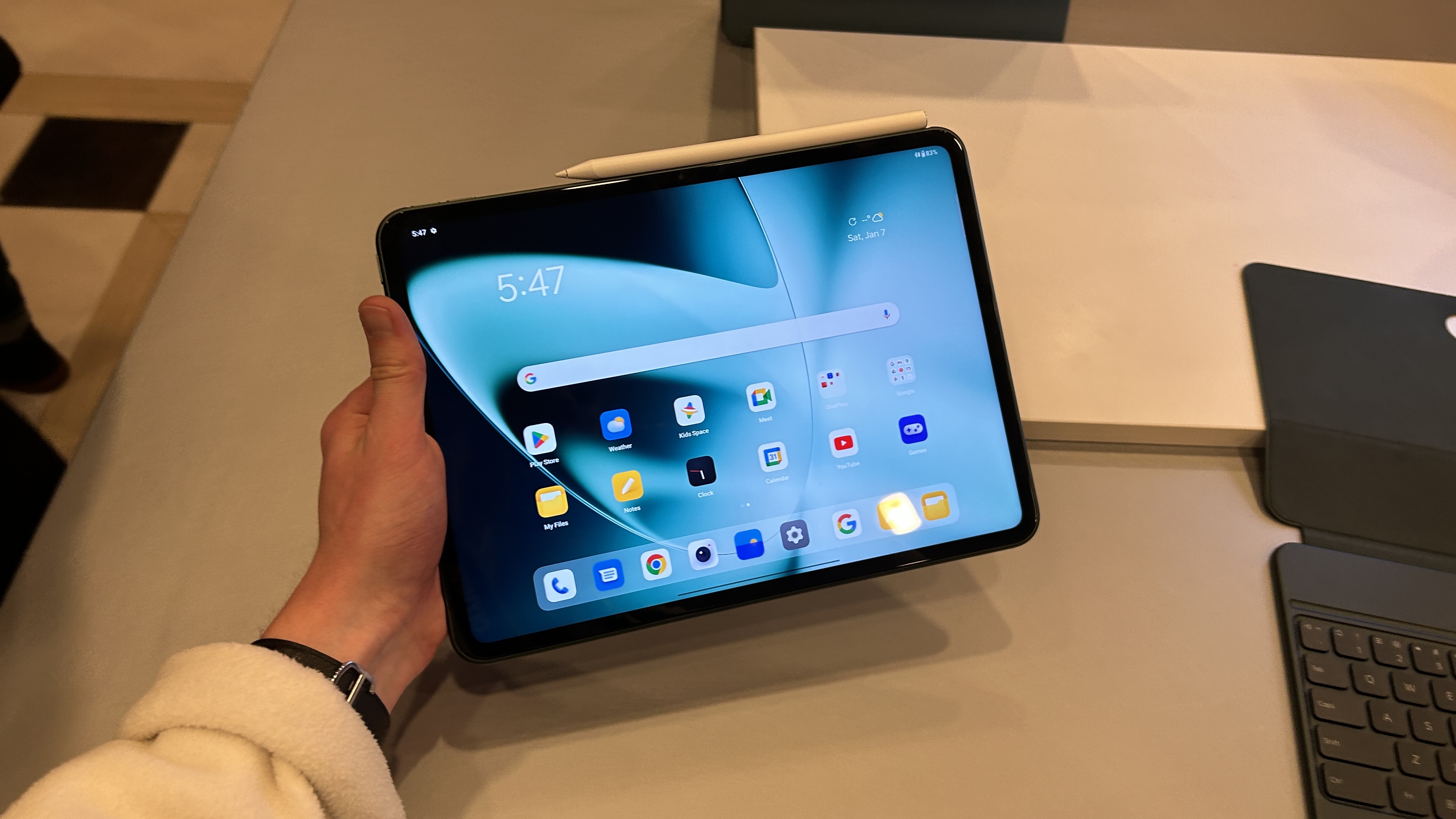
For starters, the OnePlus Pad boasts an 11.61-inch LCD display that delivers an iPad Pro-beating 2800 x 2000 pixel resolution and 500 nits of brightness. You’re also getting support for Dolby Vision HDR, which goes some way to mitigating the lack of OLED technology we’ve seen included on even-more-premium tablets like the Samsung Galaxy Tab S8 Ultra.
The OnePlus Pad weighs 552g and is 6.5mm thick, with everything neatly housed in a sleek-looking green aluminum body. It’s powered by a MediaTek Dimensity 9000 chipset – which is essentially a rival to last year’s Snapdragon 8 Gen 1 – and 8/12GB RAM keep things suitably smooth and speedy on the performance front.
The one big design quirk is the device’s centrally-positioned 13MP rear camera – though we don’t often see 7:5 aspect ratios on tablets, either. I’m not entirely sure whether either feature is a winner just yet, but kudos to OnePlus for pushing the boat out.
Most impressive is the OnePlus Pad’s on-paper battery life. The tablet’s massive 9510mAh battery can supposedly allow for more than 12 hours of video-watching and up to one whole month of standby life. Those specs trump the battery credentials on some of the very best tablets out there in 2023, so if OnePlus can get the price right (we still don’t know global pricing), then the OnePlus Pad could be a winner for more than just OnePlus fans.
Hands-on OnePlus Pad review: Price and availability
- Pre-orders begin in April
- Available in the US, UK and Australia
As mentioned, the OnePlus Pad was first teased on February 7 but officially unveiled to the press at MWC Barcelona 2023 on February 27.
Pre-orders for the tablet begin in April for customers in the US, UK and Australia, though OnePlus hasn’t yet confirmed a concrete release date. It’s nice to see OnePlus offering the OnePlus Pad in more regions than usual, though – the company doesn’t yet have much of a presence in Australia, so it’ll be hoping the OnePlus Pad changes that.
The OnePlus Pad will ship in two memory configurations – 8GB RAM and 12GB RAM – with each variant boasting 128GB of storage. As with the tablet’s release date, global pricing for the OnePlus Pad hasn’t yet been confirmed – but, given its specs, we’d expect the device to price-match (or undercut) a competitor like the Samsung Galaxy Tab S8, which starts from $699 /£649 / AU$1,099.
Hands-on OnePlus Pad review: Specs
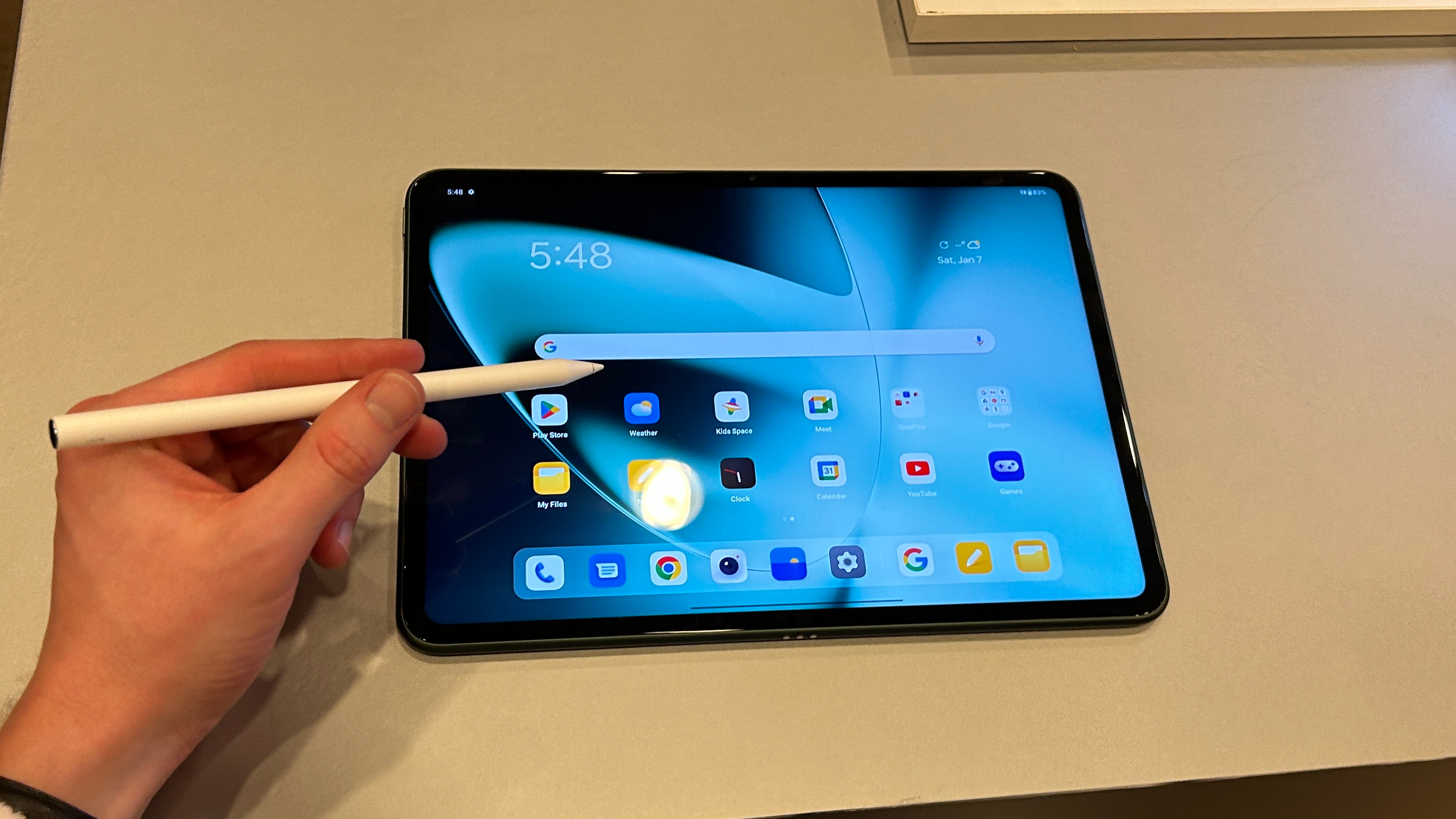
Check out the tablet’s key specs below:
Hands-on OnePlus Pad review: Design
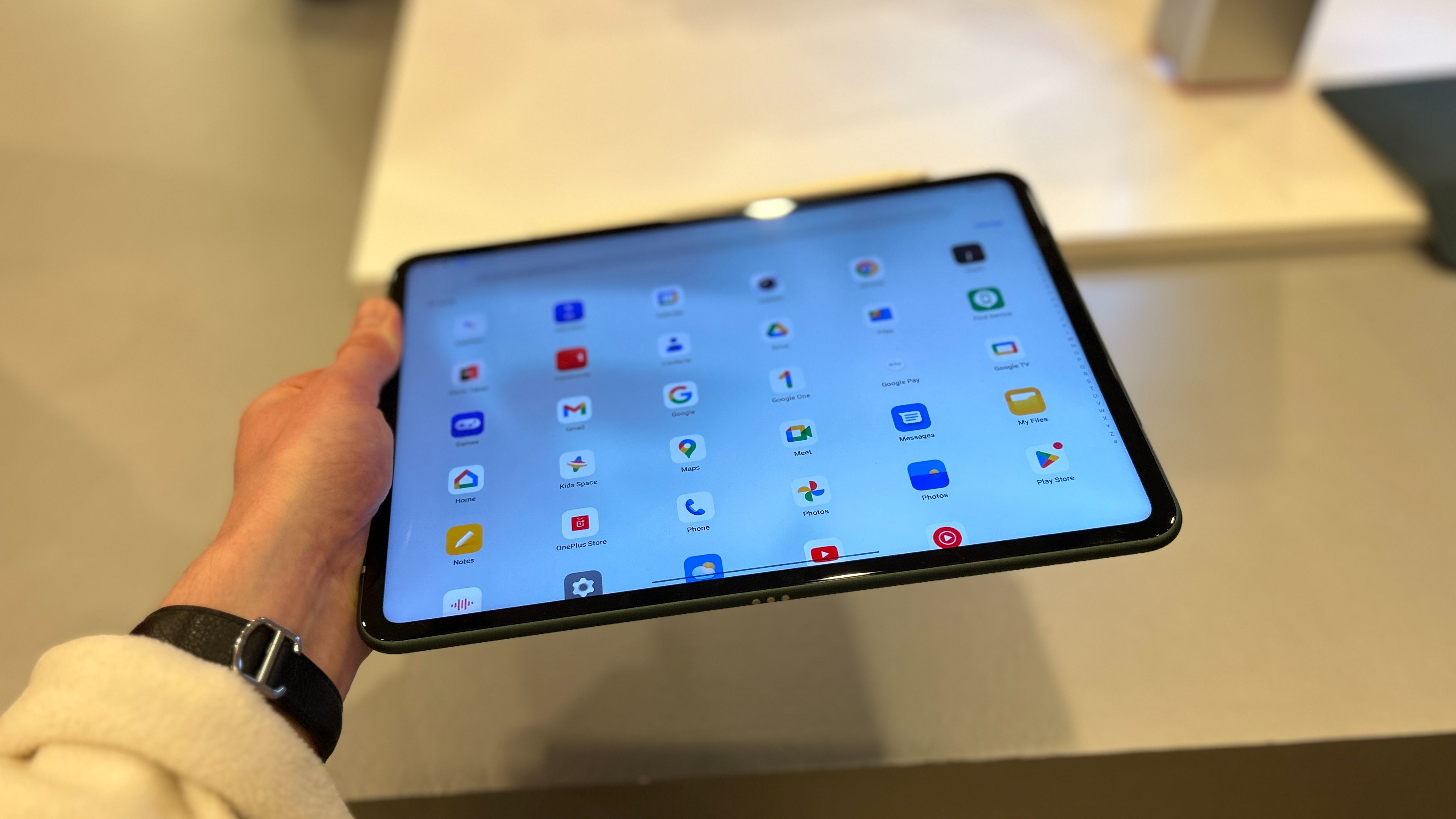
- Lightweight and comfortable to hold
- Smart-looking color, though only one option available
The OnePlus Pad’s aluminum alloy body has been designed using the brand’s ‘Star Orbit’ technique – which essentially means it’s made of brushed metal – and the tablet looks and feels great to hold.
It weighs 552g and is 6.5mm thick – that’s the same thickness as the best iPad, the iPad Pro 12.9 (2022) – and although I only used the device for a short amount of time, it feels like a tablet that will be comfortable to hold for extended reading, watching and gaming sessions.
The OnePlus Pad has a single-lens, 13MP camera on the back (more on this later), and another 8MP snapper on the front, with the latter housed in a bezel above the display. Speaking of which, the OnePlus Pad’s outer bezel measures 6.54mm, which gives the device a respectable 88% screen-to-body ratio.
The OnePlus Pad is available in a single color, Halo Green, which may be frustrating for those who like to go full Batman (read: black) with their devices, but in reality I think this shade is a smart-looking alternative to the conventional white and black colorways we’re used to seeing on phones and tablets nowadays. We hope OnePlus will release more color variants of the OnePlus Pad post-release, mind you.
You won’t get a OnePlus Stylo or OnePlus Magnetic Keyboard included in the box, but both accessories seemed like necessary complements during our hands-on session with the OnePlus Pad, which is worth bearing in mind if you’re thinking about buying one for professional use.
Hands-on OnePlus Pad review: Display
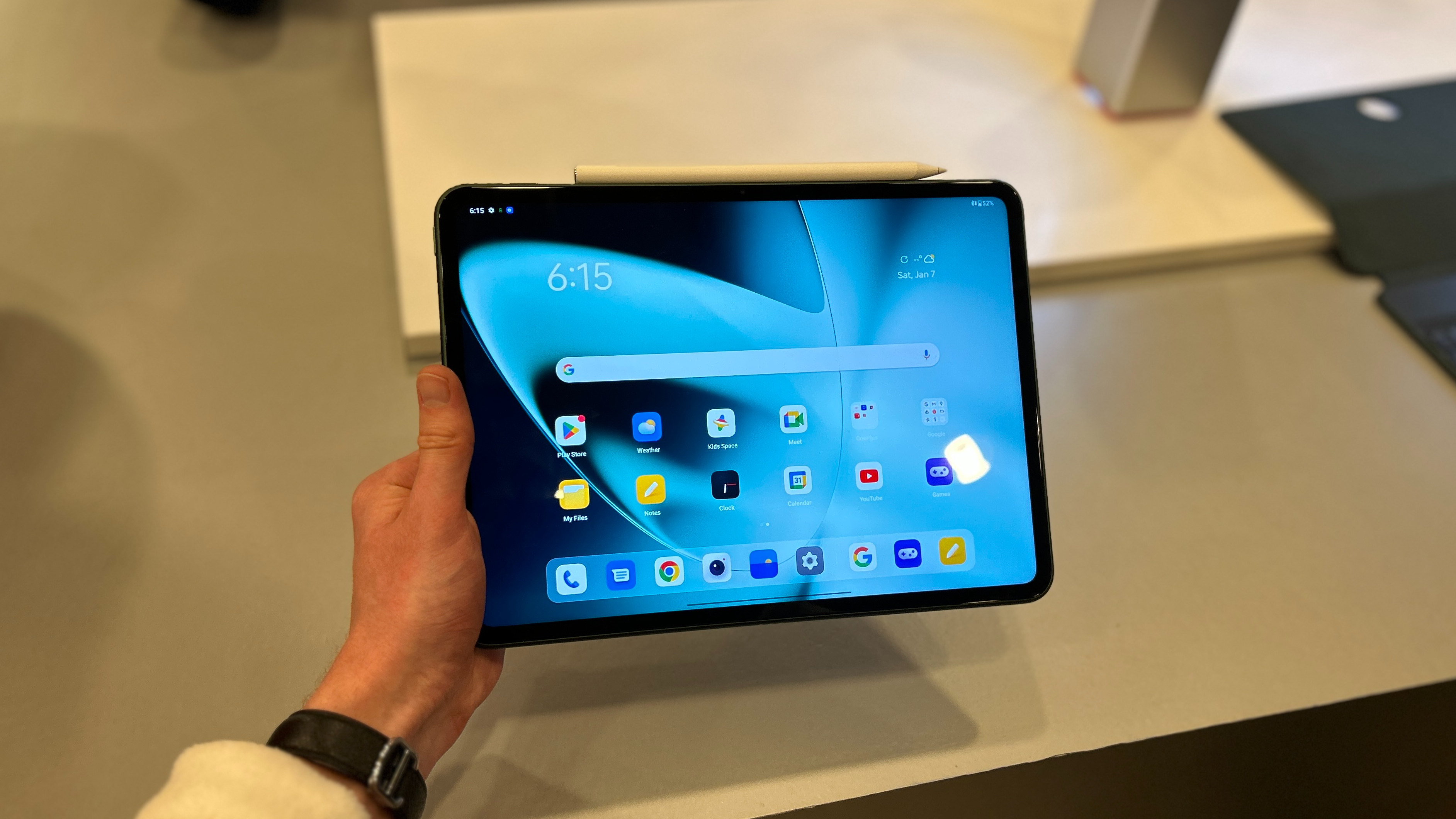
- Sharp 11.61-inch LCD display
- Unusual 7:5 aspect ratio
- 144Hz refresh rate could be great for gaming
The OnePlus Pad has an 11.61-inch LCD display with a rather unusual 7:5 aspect ratio, which delivers a 2800 x 2000 pixel resolution (296 pixels per inch) and 500 nits of brightness. That’s not quite as bright or sharp as the OLED displays you’ll find on super premium tablets like the Samsung Galaxy Tab S8 Ultra, but the OnePlus Pad’s screen nonetheless looked suitably smooth and colorful in my brief time spent using the device.
More impressive than the tablet’s resolution is its 144Hz refresh rate, which will supposedly allow the OnePlus Pad to appear buttery smooth during power-hungry gaming or editing sessions. Curiously, though, this 144Hz setting will be reserved for a select group of still-unnamed apps, with general scrolling limited to 120Hz.
Naturally, I didn’t get to run too many demanding applications during our demo, but we’ll be putting the tablet’s various refresh rates through their paces during our full review of the device.
Hands-on OnePlus Pad review: Cameras
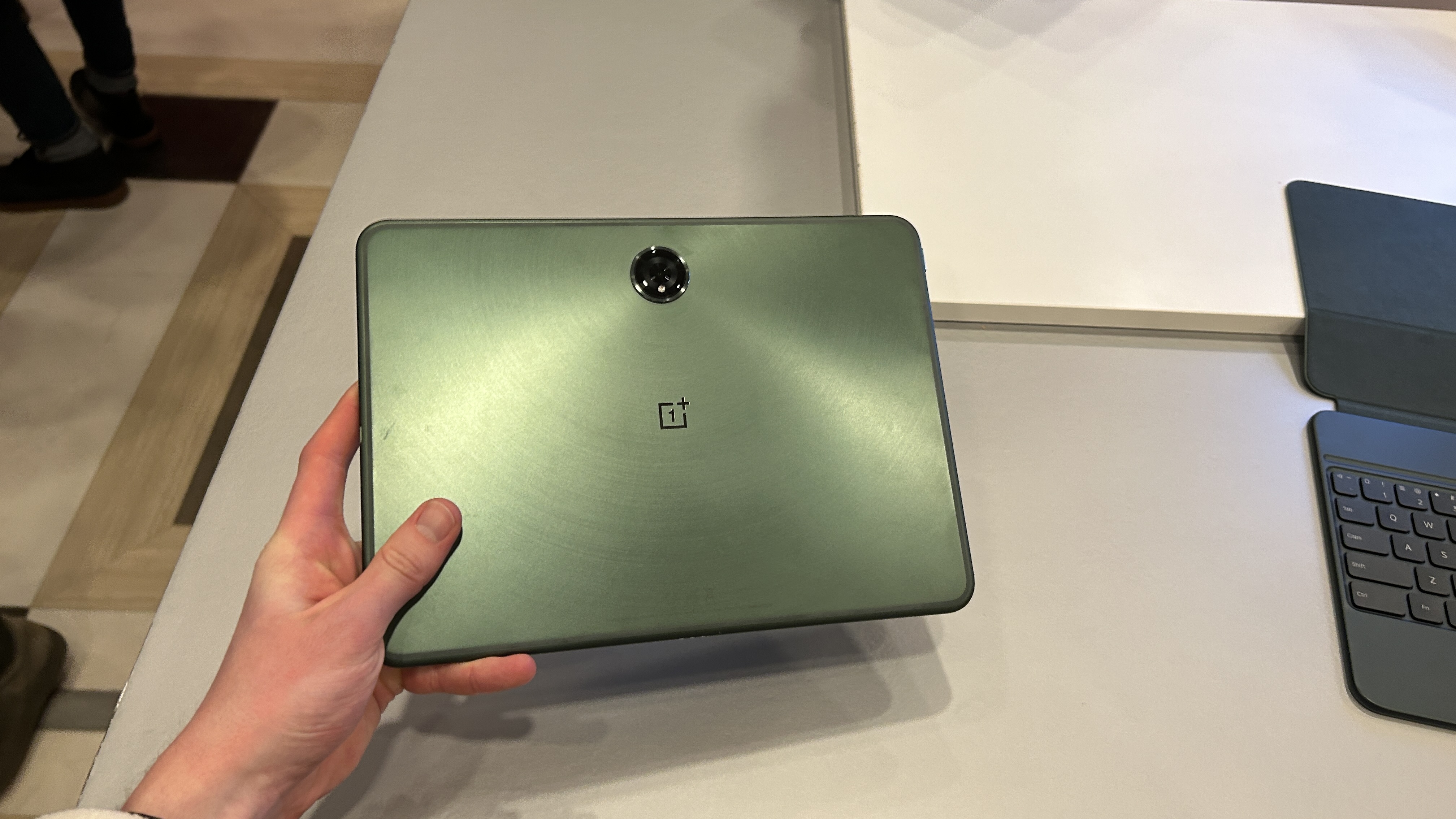
- Centrally-positioned 13MP rear lens
- 8MP selfie cam
The OnePlus Pad packs two cameras: a 13MP main sensor on the rear, and an 8MP selfie camera on the front. Neither lens is particularly groundbreaking, but more interesting than the OnePlus Pad’s actual camera setup up is the positioning of those cameras.
The tablet’s 13MP circular rear sensor is positioned slap-bang in the middle of the frame, which OnePlus says should help make photos appear more natural. It was hard to tell whether that decision has paid off using only the handful of samples we snapped during our hands-on testing, but it’ll be interesting to compare the look of pictures taken on the OnePlus Pad to those taken on any one of Apple’s iPads, for instance (which all have their cameras positioned in the corner).
Hands-on OnePlus Pad review: Performance and audio
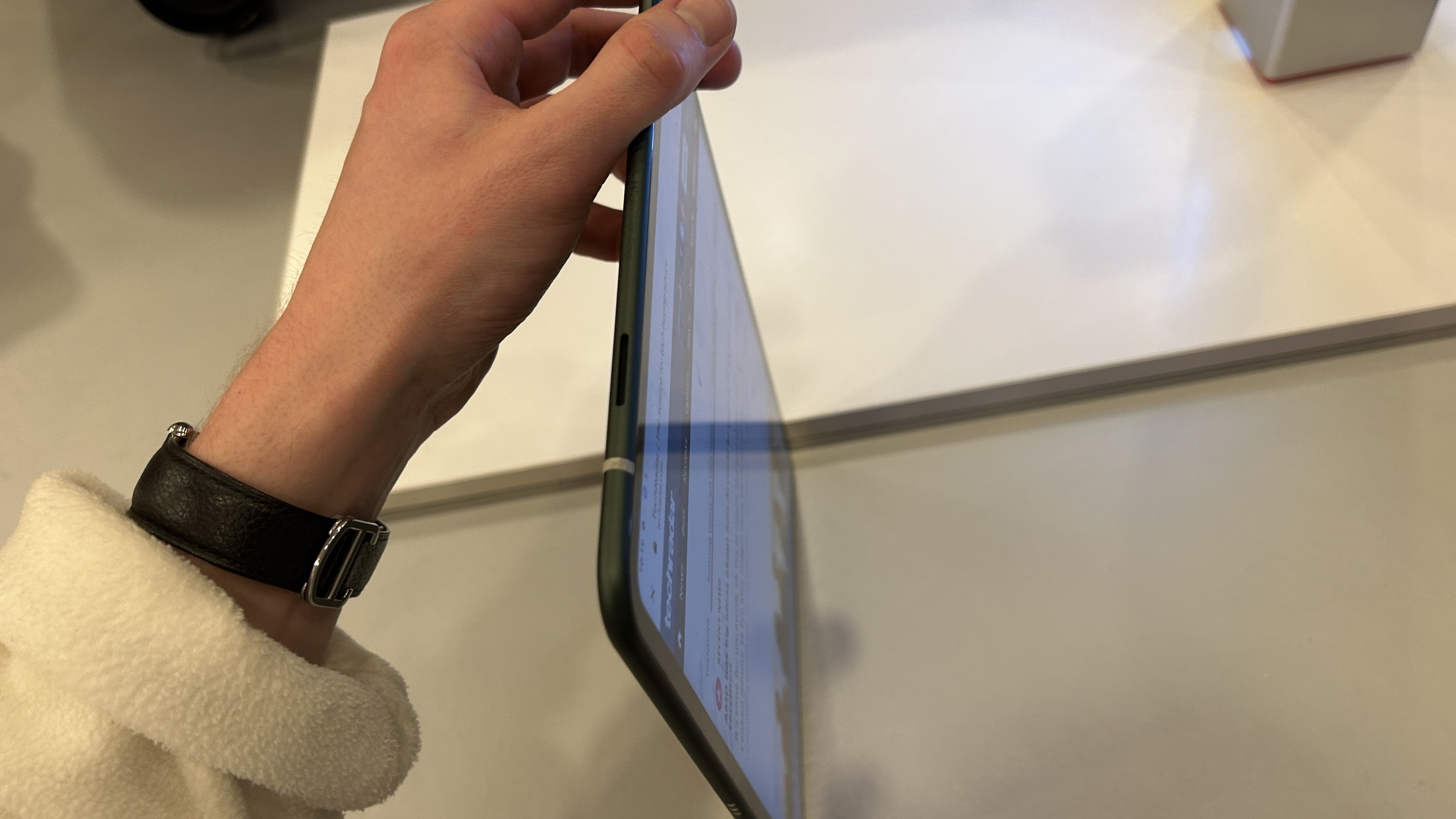
- Powerful MediaTek Dimensity 9000 chipset
Under the hood, the OnePlus Pad is powered by a high-end MediaTek Dimensity 9000 chipset clocked at up to 3.05GHz. That’s not quite as powerful as the Snapdragon 8 Gen 2 processor found in the OnePlus 11 and many other Android flagship phones hitting the market in 2023, but as tablets go, the OnePlus Pad is a capable beast.
OnePlus has made a big song and dance about the Pad’s ability to multitask, and its 8GB (or 12GB) RAM — working together with RAM-VITA — lets you juggle up to 24 live apps at the same time. I tried to do just that in my hands-on session with the device, and although there weren't 24 different apps available to test, the OnePlus Pad did seem to comfortably handle simultaneously running more apps than I’d ever reasonably care to use at the same time.
It’ll be interesting to see if the tablet’s gaming performance dips with 23 other apps open at the same time, and this is something we’ll test once we get the OnePlus Pad in for review.
Frustratingly, there are no 4G or 5G options for the OnePlus Pad, so you’ll have to make do with using Wi-Fi for tasks that require internet connectivity. You will be able to easily hotspot off a OnePlus phone, though.
On the audio front, the OnePlus Pad includes quad speakers with support for Dolby Atmos.
Hands-on OnePlus Pad review: Software
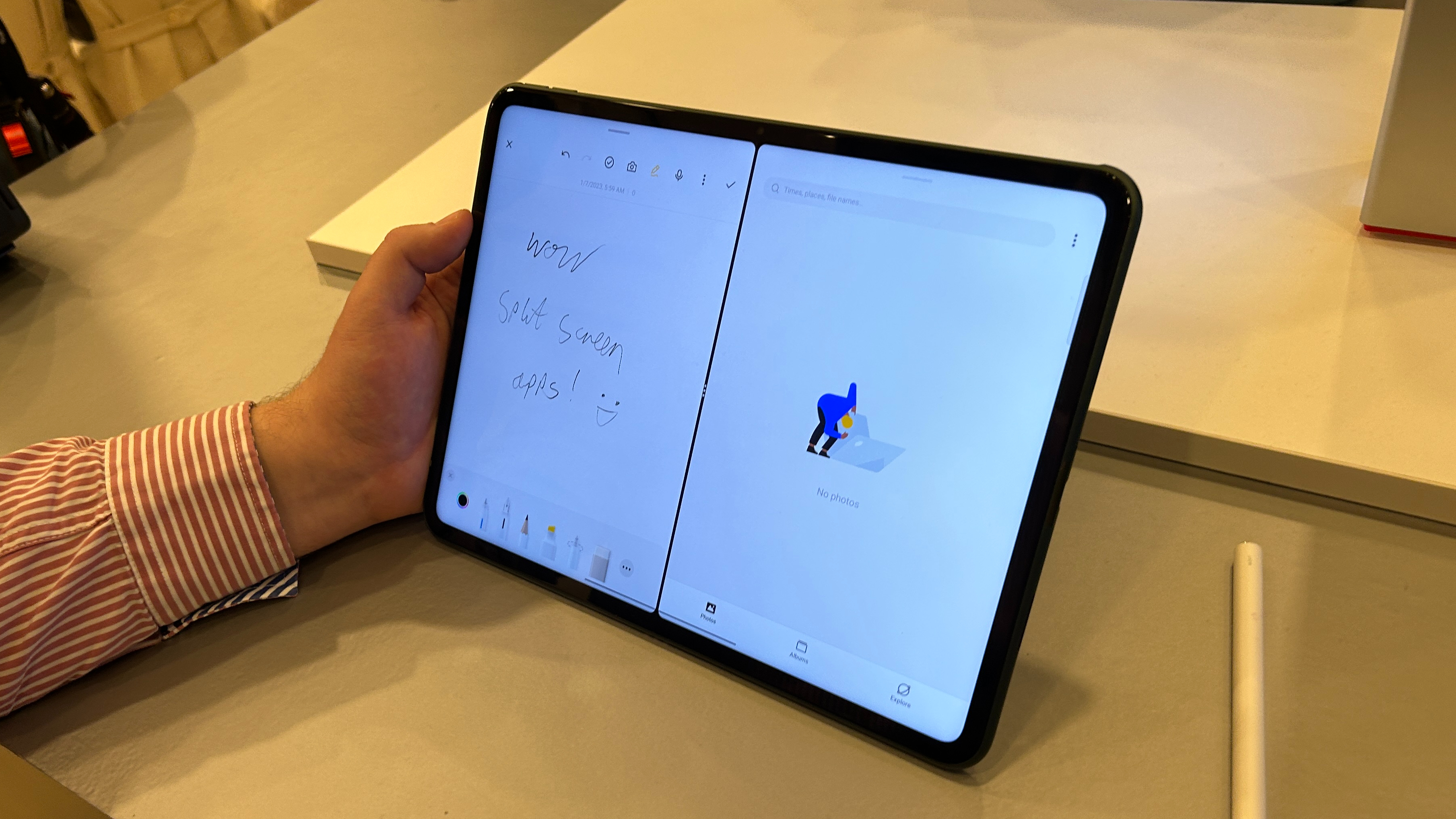
- Runs OxygenOS 13
The OnePlus Pad runs on the brand’s Android 13-based OxygenOS 13, which began rolling out for OnePlus phones at the beginning of 2023.
As such, all of OxygenOS’ various bells and whistles are present and correct here, with the split screen option – which allows you to display two apps at the same time for easier multitasking – proving particularly conducive to the OnePlus Pad’s tablet form.
We don’t yet know how long OnePlus intends to continue supporting the OnePlus Pad with software and security updates, but the company’s five-year commitment to the OnePlus 11 bodes well for its new slate.
Hands-on OnePlus Pad review: Battery life
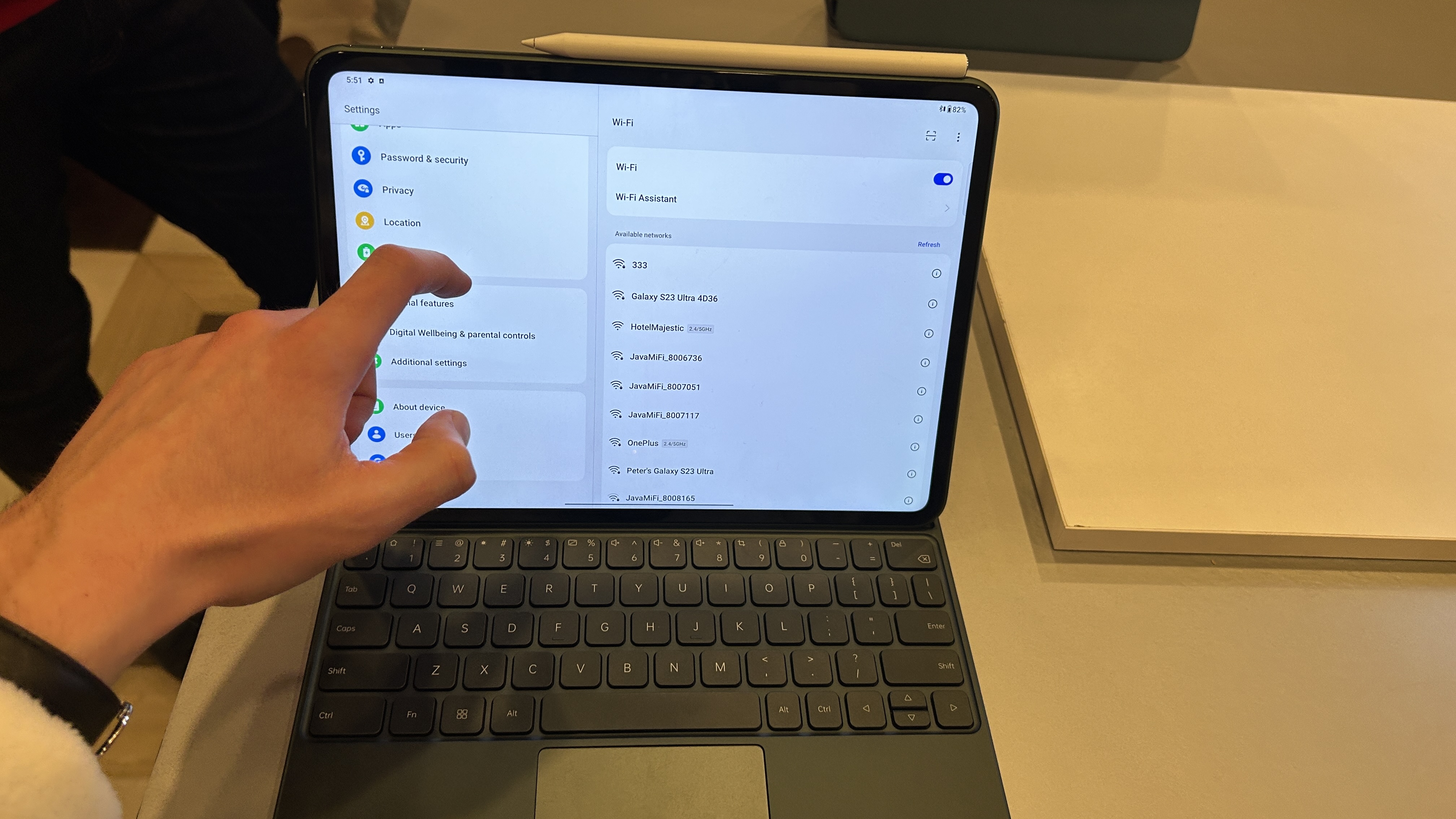
- Impressive one-month standby life on paper
- OnePlus claims you’ll get over 12 hours of video-watching time
On paper, the OnePlus Pad can outlast some of the best tablets available in 2023 thanks to its hefty 9510mAh battery (the iPad Pro 11, for comparison, has a 7,538mAh power source).
OnePlus says you'll get over 12.4 hours of video-watching and one-month standby life from the OnePlus Pad, which can be fully juiced in approximately 80 minutes using its 67W charging.
As usual, we’ll be putting those claims to the test once we get the OnePlus Pad in for a full review – but the on-paper specs are promising.
First tested February 2023
0 comments:
Post a Comment